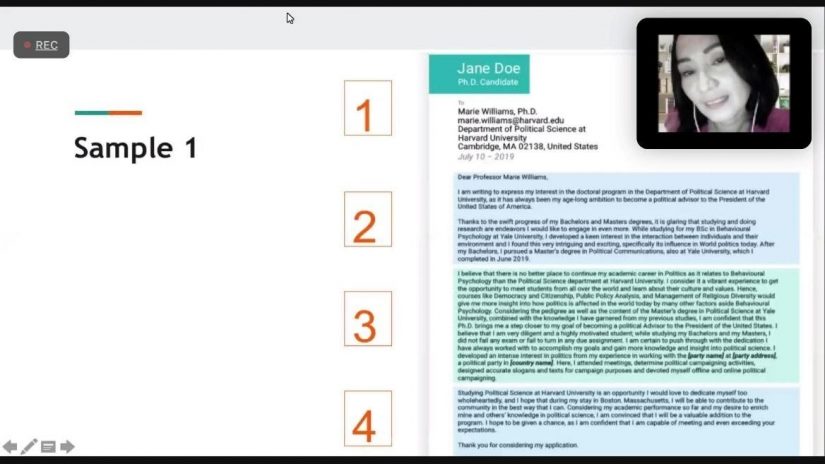
Yogyakarta, August 23rd 2021—Governmental Politics Student Corps (Komap) Fisipol UGM held a writing class that is a regular program of the Academic Division. In this sixth writing class, Komap used the topic of “Tips and tricks on making an interesting CV and motivation letter” by inviting two speakers; Arie Ruhyanto as a lecturer of the Governmental Politics Department, and Pratiwi Damayanti as the Director of Rooms in Hyatt Regency Hotel Yogyakarta.To start the session, Arie gave a welcoming remark by stating that the points that need to be paid attention to in CVs and motivation letters are how to make ourselves look interesting to hiring managers or recruiters by stating our experience, expertise, and skills. The plus point that recruiters also want to know is what is our vision and how do we achieve that vision of ours. Dovetailing Arie’s remarks, Pratiwi or better known as Dama explained the basics of cover letters and motivation letters.
Both letters’ differences can be found in their purpose. Motivation letters are aimed to apply from a position that doesn’t have a wage orientation, for example for internships, scholarships, or management trainee positions. Motivation letter is also aimed to describe one’s motivation, inspiration, and reason for applying. In terms of structure, motivation letter have four main pillars; 1) contact details, 2) intro (which includes personal information, positions applied, and motivation of the applicant), 3) body letter (which includes the story behind applicant’s achievements or experience that can be described through efforts, metrics, and impact), and finally 4) closing (which includes future plans, hope in getting the position, and thank yous).
Meanwhile, cover letters are used to complement CVs in applying for jobs. The existence of cover letters is aimed to convince hiring managers or recruiters by highlighting applicants’ experience. To complement the CV, Dama also talked about the dos and don’ts in creating a CV which are:
Things to do in creating a CV:
- Use a simple template
- Use a clear font
- Use your latest picture
- Write down your personal contacts, experience, education, skills, hobbies, achievements, training experience, and reference contact.
Things not to do in creating a CV
- Using too many colors
- CV’s size is too big
- Using hard to read and unfamiliar fonts
- Not enough or too much information
